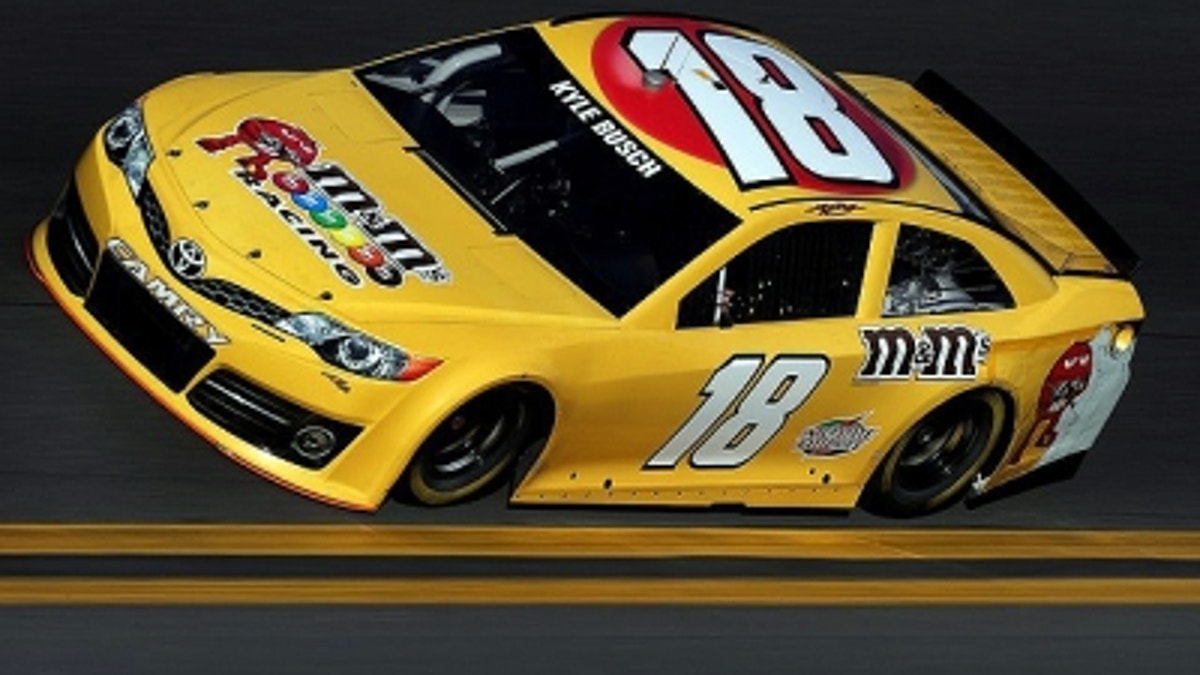
NASCAR is all about speed – up to a point.
At that point, cars sometimes think they can fly, and that raises red flags across the board.
The fastest qualifying lap in Daytona International Speedway Cup history was recorded Feb. 9, 1987 by Bill Elliott. In an unrestricted Ford Thunderbird, he ran 210.364 miles per hour. The track isn’t likely to see those numbers again.
“I think if you look at where things are today … there’s no telling what they could be running if everything was the same,” Elliott said. “The first time I ever ran Daytona in 1976, I ran at 171 miles an hour. I came back 11 years later and did 210.”
The new Generation 6 race car doesn’t show indications that it will reach speeds that frighten officials – such as the 206-mile-per-hour level the COT recorded in drafting at Daytona, but the car is producing some noticeably faster laps in early-year test runs.
Trevor Bayne approached 200 (199.650) in the draft in Daytona testing. Aric Almirola ran 194.021 in tests at Charlotte, where the track record is 193.216. Drivers ran spot speeds of 193 in Goodyear tire tests at Darlington Raceway Tuesday, and it’s reasonable to expect that the track qualifying record of 181.254 will be broken there in May.
When Sprint Cup teams return to Daytona next week to begin preparations for the Sprint Unlimited and the Daytona 500, advances since last month’s test runs are likely to push speeds past 200 in the draft. But NASCAR isn’t likely to make big changes unless there is a dramatic increase in speed.
NASCAR vice president Robin Pemberton said speeds from last month’s test sessions at Daytona were in range of NASCAR expectations.
“We’re in the ballpark,” he said. “We know the teams will go back and they’ll work. They’ll bring a little bit better this, better that. So we feel comfortable with that.
“The race track is coming to us a little bit. Speeds will fluctuate a lot. They'll be better on new tires. It will drop off as it goes. But we're right in the ballpark. We don't foresee any changes.”
NASCAR is likely to ignore slight speed gains if the new car shows promise in packs, particularly at intermediate tracks.
“Some of the things that we've worked on, where we get our downforce, how we evacuate air from up under the car if a team chooses to do so with different ductwork and cooling hoses and so forth, that's all in an effort to make the cars run a little bit better in groups or in packs,” Pemberton said.
“We put our best foot forward, and the goal was to be better than we were a year ago, and I think we've achieved that. But … we're not going to lead with our chin here. We know that we've worked hard, we know that we've made gains, we know the car is better than the last car. There's more drivers out there that like this car better than the last car, and when you put all of those things together, it should equate out to be better racing.”
Will that happen with faster speeds? Soon, the NASCAR world will know.
Mike Hembree is NASCAR Editor for SPEED.com and has been covering motorsports for 31 years. He is a six-time winner of the National Motorsports Press Association Writer of the Year Award.
